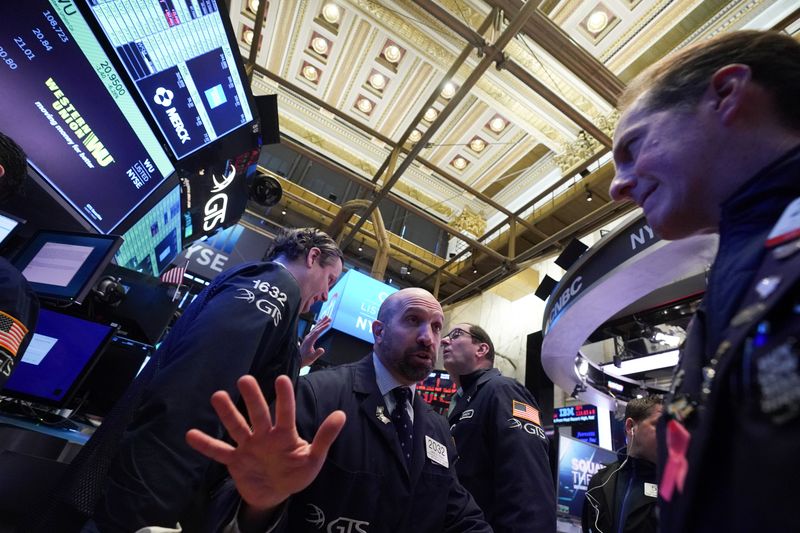This post was originally published on this site
https://i-invdn-com.akamaized.net/trkd-images/LYNXMPEG281VB_L.jpg
By Lewis Krauskopf
NEW YORK (Reuters) – Investors trying to gauge the further hit to U.S. stocks from a global coronavirus outbreak and plunging oil prices are looking to past episodes of market volatility, from World War II to the SARS virus.
The good news: Past geopolitical events have typically seen the S&P 500 () take three weeks to bottom and another three weeks to recover to prior levels, Deutsche Bank (DE:) strategists said in a report that examined 29 past incidents of geopolitically driven market volatility.
That list includes the 9/11 attacks, the first Gulf War and Britain’s vote to exit the European Union, but not market-driven events such as the 2008 financial crisis and the dot-com bubble.
The 2020 selloff, which started on Feb. 19, is also far deeper than many prior episodes of volatility the bank studied: As of afternoon trade on Monday, the S&P 500 had already fallen more than 17% from its Feb. 19 closing high.
By comparison, the median size of the selloff in the bank’s analysis was 6.3%. That includes a nearly 16% decline around the first Gulf War, a 5.6% drop on Brexit worries and a nearly 26% tumble after Germany attacked France in 1940.
“We see parallels between the virus outbreak and geopolitical shocks in that both entail potentially large but difficult to quantify risks,” Deutsche Bank strategists Binky Chadha, Parag Thatte and Srineel Jalagani said in an analysis last week.
Still, analysts at the bank cautioned that the “uniqueness” of the coronavirus outbreak means there is no single playbook that easily fits the current situation.
Uncertainty surrounding the coronavirus’ trajectory and uneven responses to the outbreak around the world have hampered investors’ ability to determine its economic damage and further impact on asset prices.
Monday’s oil price shock on the heels of Saudi-Russian supply tensions further clouded forecasts and added a new dimension to the selloff in equities, with the S&P 500 triggering a trading halt as it fell 7% after the open.
(GRAPHIC: Geopolitical events and stock selloffs – https://fingfx.thomsonreuters.com/gfx/editorcharts/USA-STOCKS/0H001R8FFC7Z/eikon.png)
Stretched valuations on the heels of a 30% gain in 2019 may also be helping to exaggerate downside moves during the latest pullback, the bank’s strategists said.
Of the geopolitical events tracked in the report, stocks showed a median recovery of 14.1%, a year after the bottom. But they were not always higher a year later, especially during events that coincided with recessions, such as the 9/11 attacks.
The strategists also noted that the current selloff has similarities with pullbacks associated with spikes in volatility. In such events, stocks took twice as long to bottom compared with those linked to geopolitical events and saw sharper median selloffs.
Fusion Media or anyone involved with Fusion Media will not accept any liability for loss or damage as a result of reliance on the information including data, quotes, charts and buy/sell signals contained within this website. Please be fully informed regarding the risks and costs associated with trading the financial markets, it is one of the riskiest investment forms possible.


